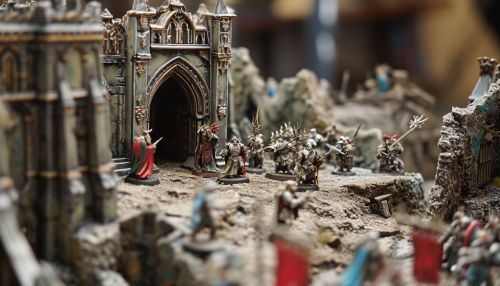Warhammer: Age of Sigmar
Overview
Warhammer: Age of Sigmar is a tabletop wargame created by Games Workshop. It is the successor to the company's earlier game, Warhammer Fantasy Battle, and is part of the larger Warhammer franchise. The game is set in the Mortal Realms, a series of interconnected dimensions that represent different aspects of magic.


Gameplay
Warhammer: Age of Sigmar uses a turn-based system where players alternate taking turns to move, attack, and perform other actions with their units. Each player controls an army made up of various units, each with its own abilities and statistics. The game is won by completing objectives, which are determined by the scenario being played.
Setting
The setting of Warhammer: Age of Sigmar is a high fantasy universe, with a heavy emphasis on magic and the supernatural. The Mortal Realms are each tied to a different type of magic, and are populated by a variety of races and creatures. The realms are constantly at war, with various factions vying for control.
Factions
There are several major factions in Warhammer: Age of Sigmar, each with its own unique units, abilities, and playstyle. These include the Stormcast Eternals, celestial warriors created by the god Sigmar; the Nighthaunt, spectral beings from the realm of death; and the Kharadron Overlords, a race of steampunk dwarves.
Miniatures
A key component of Warhammer: Age of Sigmar is the miniatures. These are highly detailed models that represent the various units in a player's army. Players typically assemble and paint these miniatures themselves, adding a level of personalization to their armies.
Reception
Warhammer: Age of Sigmar has been generally well received, with praise for its streamlined rules and dynamic setting. However, it has also been criticized for its high cost of entry and the complexity of its miniatures.
